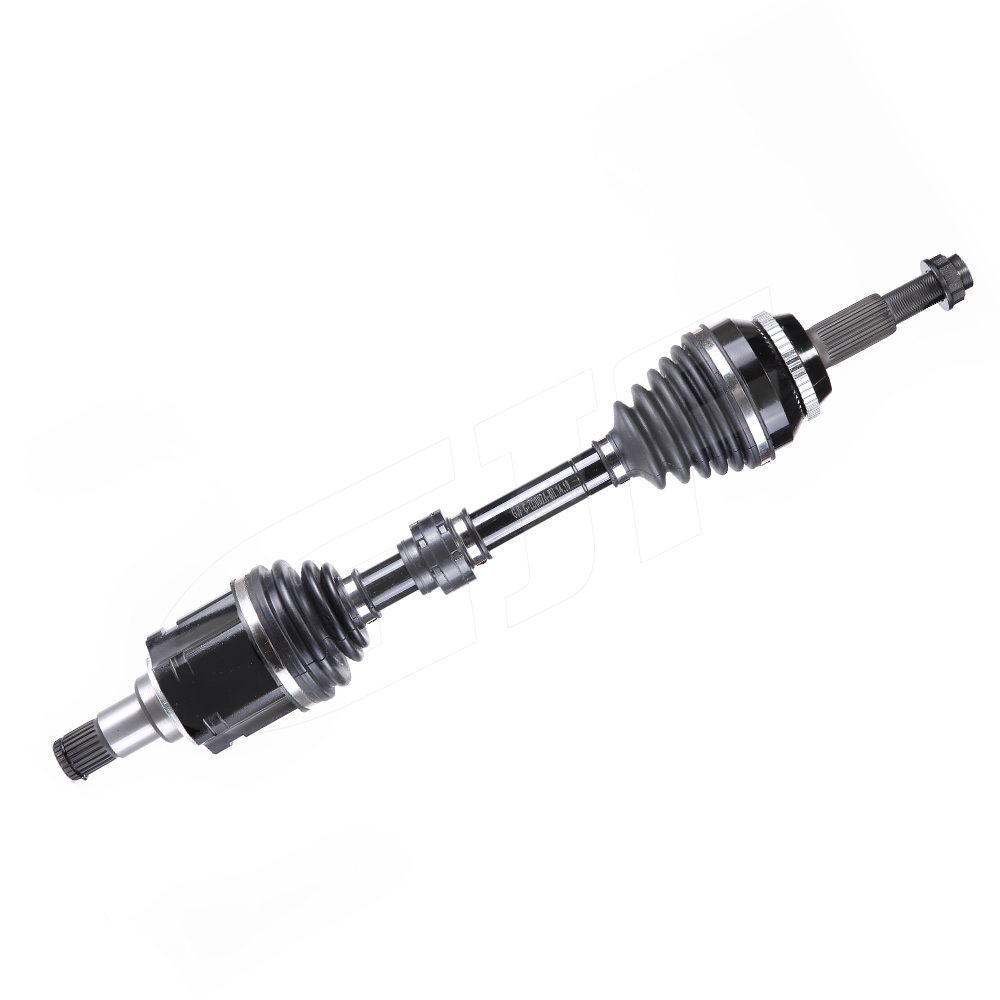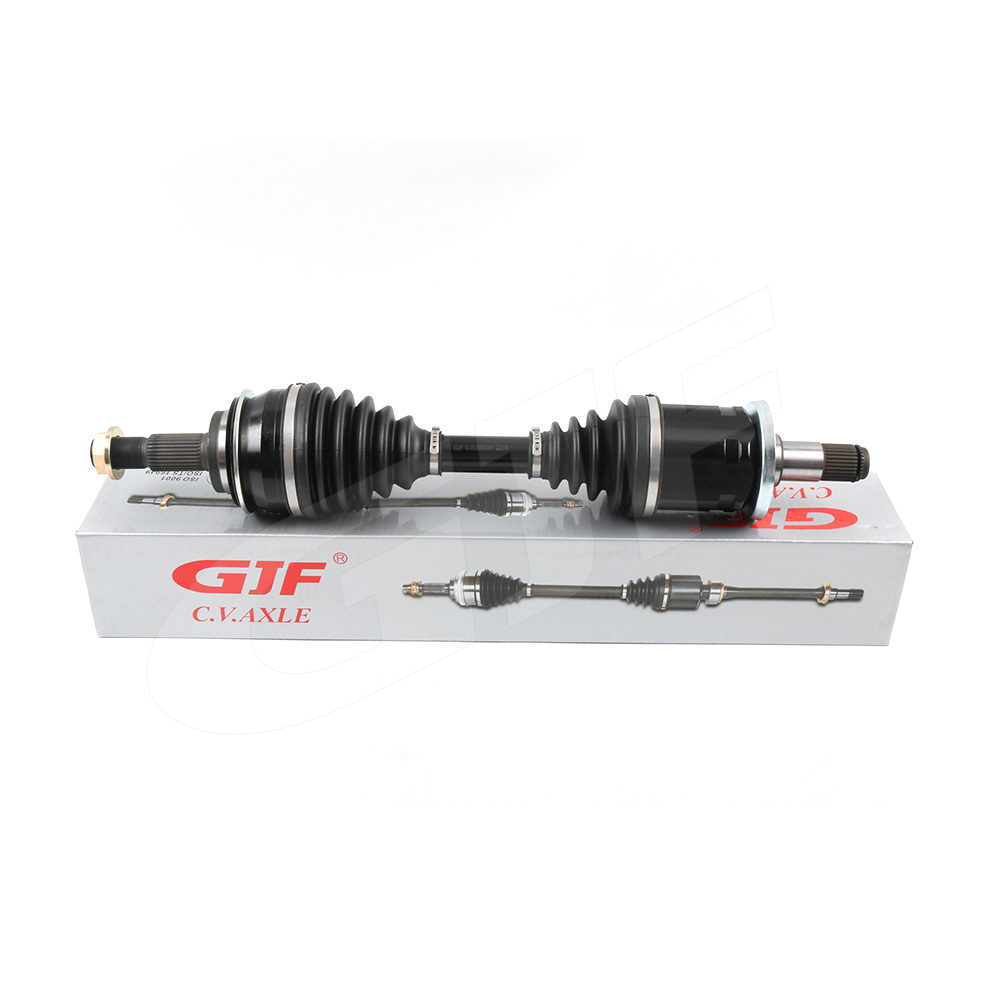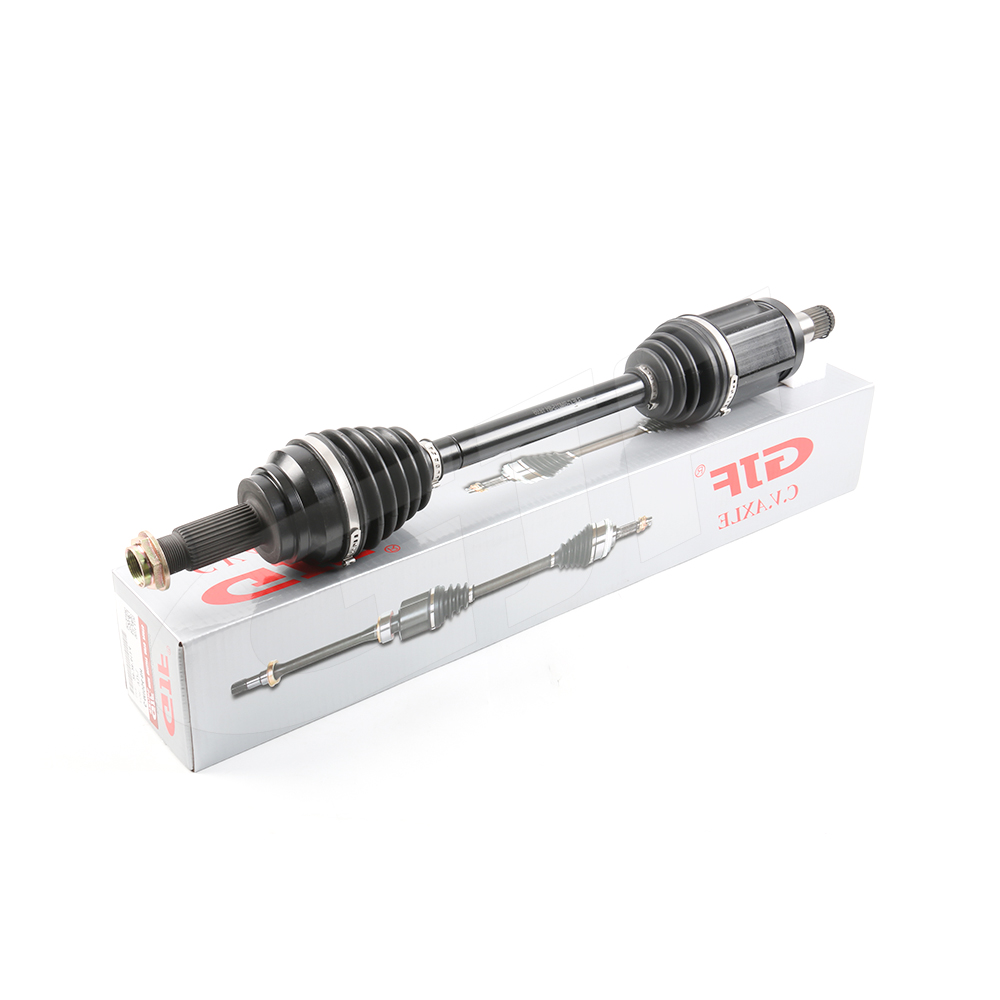Views: 0 Author: Site Editor Publish Time: 2025-07-18 Origin: Site


Have you ever wondered what keeps your vehicle's wheels turning smoothly? The driveshaft plays a crucial role in transmitting engine power to the wheels. But what happens when its length isn't right? In this article, we'll explore the importance of the driveshaft's length and how it affects your vehicle's performance. You’ll learn why knowing the standard length is essential for maintenance, replacement, and even customization.

A driveshaft is a crucial part of your vehicle's drivetrain. It transmits rotational power from the engine to the wheels, allowing the vehicle to move. Whether your car is rear-wheel drive, front-wheel drive, or all-wheel drive, the driveshaft ensures that engine power reaches the wheels efficiently. The length of a driveshaft isn't universal. It depends on various factors like the vehicle's make, model, wheelbase, and drivetrain configuration. For example, rear-wheel drive vehicles generally require longer driveshafts because the engine and transmission are at the front, while the driven wheels are at the rear. Front-wheel drive vehicles, on the other hand, use shorter driveshafts or CV axles. The length of the driveshaft significantly impacts the efficiency and reliability of the drivetrain. A driveshaft that is too short or too long can cause imbalance, leading to vibrations and even increased wear on bearings and U-joints. The correct length ensures that power is transmitted smoothly and without unnecessary stress, keeping the vehicle running efficiently and preventing premature component failure.
The design of a vehicle plays a major role in determining the length of its driveshaft. For example, rear-wheel drive vehicles typically need a longer driveshaft because the engine and transmission are located at the front, while the driven wheels are at the rear. On the other hand, front-wheel drive cars have a shorter driveshaft, as both the engine and the drive wheels are at the front.
Mounting of the Driveshaft
The way the driveshaft is mounted also affects its length. In many vehicles, the drivetrain components—such as the transmission and differential—are arranged in specific ways to ensure smooth power transfer. These configurations can result in different driveshaft lengths, even between models of the same brand.
The wheelbase—the distance between the front and rear axles—directly impacts the driveshaft length. A vehicle with a longer wheelbase generally requires a longer driveshaft to cover the increased distance between the engine and the rear differential. Shorter wheelbases, common in compact cars, typically use shorter driveshafts.
Different drivetrain types also affect the driveshaft length:
Rear-Wheel Drive (RWD): A single, longer driveshaft connects the transmission to the rear axle.
Front-Wheel Drive (FWD): These vehicles often use CV axles instead of a traditional driveshaft. The length of the driveshafts in FWD vehicles is much shorter.
All-Wheel Drive (AWD) / Four-Wheel Drive (4WD): These systems may use multiple driveshafts, each with varying lengths, depending on the configuration of the drivetrain.
The type of suspension and axle design can change how the driveshaft fits within the vehicle. For instance, vehicles with independent suspensions may need a more flexible driveshaft design to accommodate suspension movement, while those with solid axles can have more rigid driveshafts. These factors influence the driveshaft's length and the need for additional components like telescoping shafts.

Drive shaft lengths vary based on the type of drivetrain.
Rear-Wheel Drive (RWD): Typically between 45 to 50 inches, but can be longer depending on vehicle size.
Front-Wheel Drive (FWD): Generally shorter as the power is transferred to the front wheels.
All-Wheel Drive (AWD): These vehicles require longer drive shafts, especially in models with complex suspension systems. The length of the drive shaft is also affected by the vehicle’s design and drivetrain configuration.
In rear-wheel drive vehicles, the driveshaft typically needs to cover a longer distance, as the engine and transmission are located at the front while the driven wheels are at the rear. For these vehicles, the driveshaft length usually ranges from 45 to 50 inches.
Examples:
Chevrolet Silverado: Around 45-46 inches
Ford Mustang: Approximately 46-47 inches
These lengths can vary based on the wheelbase and specific model configurations.
Front-wheel drive vehicles use a different system compared to RWD vehicles. Instead of a traditional driveshaft, FWD vehicles typically rely on CV axles to transfer power to the wheels. Since both the engine and wheels are at the front, these vehicles require much shorter shafts.
Why Shorter Driveshafts?
The proximity of the engine and transmission to the drive wheels means there's less distance to cover, making CV axles more efficient and easier to implement.
AWD and 4WD vehicles use multiple driveshafts to transfer power to all four wheels. The length of these shafts depends on the drivetrain layout, with the rear driveshaft usually being longer than the front one. The center driveshaft in AWD systems can also vary in length based on the vehicle's design.
Length Variations:
AWD: These systems often have a shorter front driveshaft and a longer rear one, especially in SUVs and crossovers.
4WD: For off-road or heavy-duty trucks, driveshaft lengths may be even longer to handle more torque and accommodate modifications like lift kits.
Modified or custom-built vehicles often require specific driveshaft lengths to accommodate their unique designs. Performance cars or off-road vehicles may need custom-length driveshafts to ensure optimal power transfer.
Customization and Modifications:
Lift Kits: When vehicles are lifted, the distance between the drivetrain components increases, which often requires a longer driveshaft.
Performance Enhancements: Custom shafts may be needed for higher horsepower or torque, ensuring durability and efficient power delivery.
Bespoke Driveshafts: Manufacturers and distributors can design driveshafts tailored to the specific needs of a vehicle, ensuring perfect fit and functionality.
American-made vehicles like trucks and SUVs typically have driveshafts that range from 45 to 50 inches for rear-wheel-drive models. For larger vehicles like full-size trucks, the driveshaft length can be longer to handle the increased distance between the transmission and rear differential.
Examples:
Chevrolet Silverado: Around 45-46 inches
Ford F-150: Approximately 47-48 inches
Distributors often provide a range of driveshaft options for different vehicle types and configurations. Custom lengths are available for specialized applications such as racing, off-roading, or performance vehicles. When selecting a driveshaft through a distributor, it's important to specify the exact make, model, and drivetrain configuration.
Japanese cars, especially those from brands like Toyota, Honda, and Nissan, often have shorter driveshafts compared to their American counterparts. These vehicles are typically lighter and have shorter wheelbases, which results in a more compact driveshaft design.
Examples:
Toyota Camry: Around 42-45 inches
Honda Civic: Approximately 40-44 inches
When a driveshaft is too long or too short, it can cause unwanted vibrations in your vehicle. These vibrations usually come from an imbalance in the drivetrain, which can be felt in the steering wheel, floorboards, or seats. If the driveshaft is not correctly balanced, the imbalance will worsen over time, causing wear and tear on other components.
The Role of Balancing
Proper balancing of the driveshaft is crucial to maintaining the drivetrain's integrity. If it’s not balanced, it can lead to uneven stress on the bearings and joints, potentially causing early failure.
An incorrect driveshaft length can put extra stress on the bearings and U-joints, leading to premature wear. If the driveshaft is too long, it may force the U-joints into awkward angles, which can cause them to wear out faster. If it’s too short, it may cause misalignment, leading to similar issues. When either of these parts fails, it can lead to costly repairs and unsafe driving conditions. Regular checks of the driveshaft and U-joints can help detect issues early.
Every driveshaft has a critical speed, which is the speed at which the shaft begins to vibrate uncontrollably, or "whirl." If the driveshaft operates at or near this speed, it can cause severe damage to the drivetrain.
Avoiding Critical Speeds
Designing the driveshaft to stay below its critical speed is essential to prevent failure. Engineers consider factors like the driveshaft's length, weight, and material when designing it to ensure it operates smoothly at all speeds, preventing issues such as whirling.
The length of a driveshaft directly affects a vehicle’s ability to transmit torque efficiently. A longer driveshaft can introduce more flex and resistance, reducing its efficiency in transferring power from the engine to the wheels. Conversely, a shorter driveshaft has less distance to cover, leading to smoother and quicker power delivery.
Efficiency
When the driveshaft is the correct length, power is transmitted efficiently, reducing losses in the drivetrain. If the length is off, more energy is lost, leading to a decrease in overall vehicle performance.
Driveshaft length also plays a key role in vehicle handling and stability, especially in high-performance or off-road vehicles. A longer driveshaft can impact how a vehicle handles sharp turns or high-speed driving. For performance vehicles, precision in driveshaft length helps ensure stability during cornering and acceleration.
In Off-Road Vehicles
For off-road vehicles, having the right driveshaft length helps manage the increased stress from rough terrains, ensuring better stability and traction.
Driveshaft length and weight directly affect fuel efficiency. A heavier or longer driveshaft requires more energy to rotate, consuming more fuel. In smaller cars, where efficiency is a priority, the driveshaft length is typically optimized to reduce weight and improve fuel economy.
Torque Reduction
The final gear reduction in the differential reduces the amount of torque carried by the driveshaft, which helps to improve fuel efficiency. This reduction ensures the driveshaft operates within an optimal range, minimizing unnecessary energy loss.
High-performance cars often require custom driveshafts to handle increased horsepower and torque. Stock driveshafts may not be designed to handle the added stress from upgraded engines or modified transmissions. Custom driveshafts are built to endure these demands, ensuring smooth power delivery and maintaining drivetrain stability.
Material Choice
The material used in custom driveshafts plays a huge role in performance. Steel is commonly used for its durability, while aluminum offers reduced weight for better speed and fuel efficiency. Carbon fiber is an increasingly popular choice for high-performance applications, offering a combination of light weight and exceptional strength.
Off-road vehicles are subjected to harsh conditions, so their driveshafts need to be stronger and more flexible. Modifications like lift kits and larger tires can change the driveshaft’s necessary length and configuration.
Impact of Larger Tires and Lifts
Larger tires increase the distance between the drivetrain components, requiring a longer driveshaft to maintain proper alignment and power delivery. Lift kits also raise the vehicle, affecting the driveshaft’s angle, which may call for a custom solution.
For vehicles that need longer driveshafts, two-piece units are often used. These help manage the increased length and reduce vibrations, making the power transfer smoother. The design also allows for better durability and performance under extreme conditions.
Telescoping Shafts
Telescoping shafts are another solution for long driveshafts. They’re designed to accommodate changes in length as the suspension moves, ensuring consistent power transfer even during rough terrain driving or when the vehicle is lifting or lowering.

When choosing a driveshaft, it’s important to consult your vehicle’s manual or contact the manufacturer for recommended specifications. The manual will provide the exact driveshaft length required for optimal performance and alignment. It ensures that you select the right part, maintaining the vehicle’s efficiency and safety.
Why It Matters
Manufacturer recommendations are based on the specific design of your vehicle. Choosing a driveshaft that matches the manufacturer's standards helps avoid problems like vibrations, imbalances, or undue stress on other components.
Aftermarket driveshafts offer more options for customization, but choosing the right one is crucial. Make sure the aftermarket driveshaft is compatible with your vehicle’s specifications, such as its drivetrain type, wheelbase, and intended use (e.g., performance, off-road).
Compatibility Considerations
Vehicle Type: Ensure the driveshaft fits the specific configuration of your vehicle (e.g., RWD, FWD, AWD).
Material: Choose a material based on your needs, whether you need strength, lightweight performance, or corrosion resistance.
Length and Alignment: Always ensure the driveshaft is the correct length to prevent issues like vibrations or misalignment.
Over time, your driveshaft can wear out or become damaged. Here are some common signs it might be time for a replacement:
Vibrations: If you feel unusual vibrations in the steering wheel or floorboards, your driveshaft might be unbalanced or damaged.
Strange Noises: Grinding or clunking noises when accelerating or decelerating could indicate a failing U-joint or bearing.
Damper and Bearing Failure
If the dampers or bearings are worn out, they may cause the driveshaft to operate inefficiently or even fail. Listen for abnormal sounds, and inspect the components for wear. If these parts show signs of failure, it’s time for a new driveshaft to ensure safe driving and proper vehicle performance.
The length of a driveshaft is influenced by vehicle design, drivetrain type, and wheelbase. Accurate measurement and proper replacement are crucial for maintaining performance.
Regularly check the driveshaft for wear, balance it properly, and opt for quality aftermarket parts. Avoid common issues by ensuring correct installation and performing routine maintenance.
A: Yes, a longer driveshaft can cause power loss due to increased flex and resistance, slightly reducing acceleration.
A: The standard length typically ranges from 45 to 46 inches, but it varies depending on the vehicle’s make and model.
A: Yes, an incorrect length can lead to vibrations, imbalances, and excessive wear on bearings and U-joints.
A: Signs include vibrations, unusual noises, and wear on components like U-joints or bearings.
